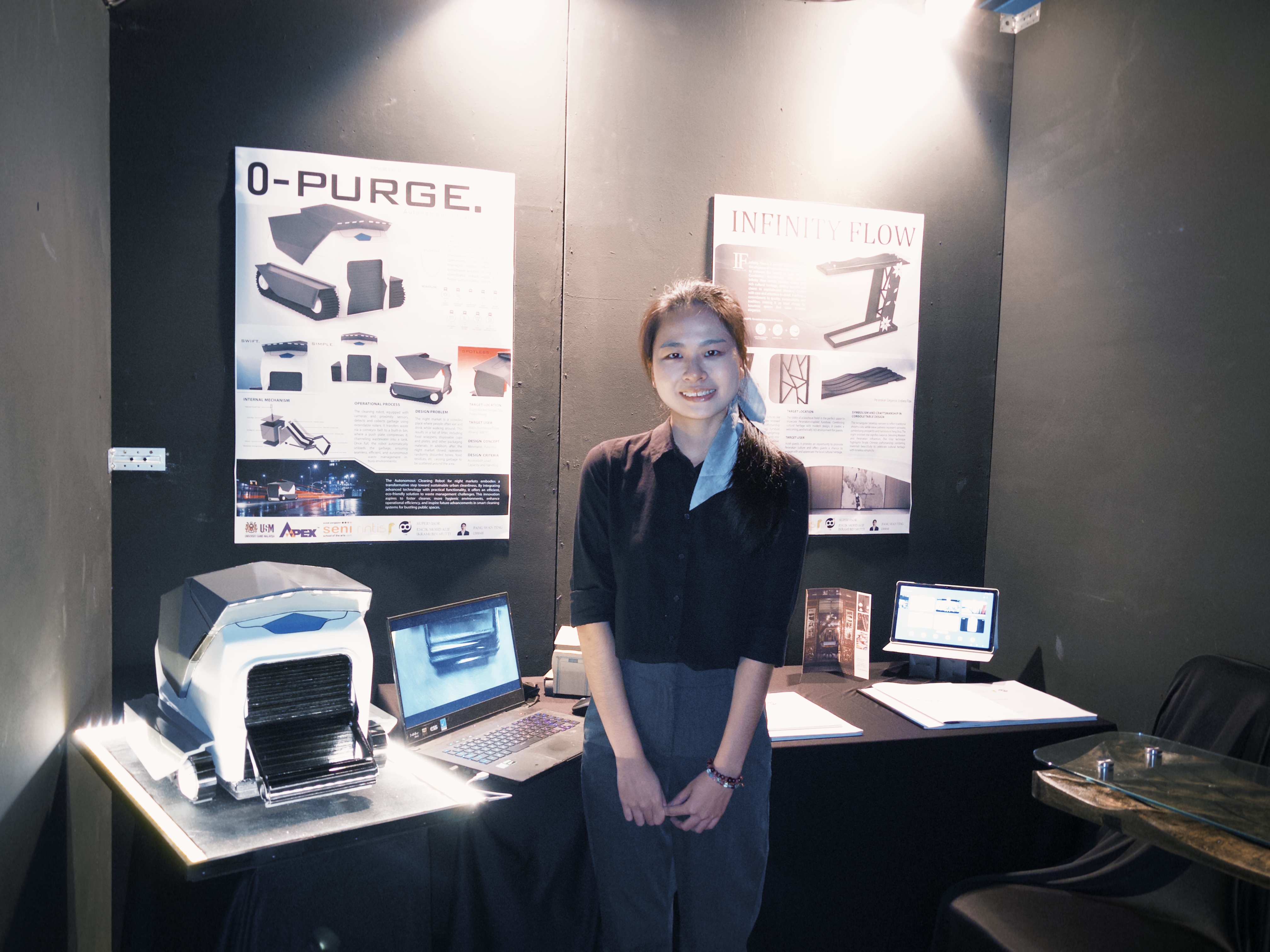What it does
Night markets often become littered with food packaging, disposable items, and vendor waste after closing. This autonomous cleaning robot is designed to efficiently collect scattered garbage, keeping public spaces cleaner and more hygienic.
Your inspiration
Inspired by observations at Malaysian night markets, where food packaging and vendor waste are often left behind after closing, this autonomous cleaning robot was developed to improve cleanliness in public spaces. It reduces litter more efficiently, addressing hygiene concerns and minimising the environmental impact of post-market waste.
How it works
The Autonomous Market Cleaning Robot is designed to operate after night markets close. It begins by checking its systems and activating GPS, cameras, and sensors to detect trash and navigate safely. Using smart mapping (SLAM), it plans an efficient route and avoids obstacles while cleaning. The robot uses AI to recognise different types of litter, then approaches and collects them using a roller mechanism. Trash is transferred to a conveyor belt that carries it into a large onboard bin. Inside the bin, a push plate compacts the garbage to save space. Any liquids are filtered and stored in a tank through small drainage holes. Once the trash or wastewater reaches full capacity, the robot travels to a disposal point to unload both safely. It also records cleaning data and uploads it to the cloud for future improvements. After finishing, it returns to its charging station and performs a final system check.
Design process
The design process began with field observations at local night markets in Malaysia. After the market closes, large amounts of litter are commonly scattered across the area. Cleaning workers typically spend several hours manually sweeping and loading trash into bins, which is both physically demanding and time-consuming. Inspired by these challenges, I developed a fully autonomous cleaning robot designed specifically for urban night markets. Initial concept development included sketches and functional exploration, focusing on form, internal systems, and sensor integration. I studied existing waste collection vehicles and robotic cleaners, and incorporated technologies such as AI and SLAM (Simultaneous Localisation and Mapping) for real-time navigation in dynamic environments. The robot uses a roller mechanism and conveyor belt to efficiently collect and compact trash. A drainage system filters liquid waste, while onboard sensors enable object detection, route planning, and obstacle avoidance. A mobile app is also envisioned to provide remote monitoring and real-time data reporting. This project aims to reduce the burden of manual labour, improve public hygiene, and support sustainable sanitation in Malaysia’s densely populated outdoor markets.
How it is different
Unlike traditional street-cleaning robots or garbage trucks, this design is specifically tailored for post-night-market environments. It combines AI-powered waste detection with a roller-lever mechanism to efficiently collect scattered litter — avoiding slower, less efficient suction systems or robotic arms. The robot is equipped with a built-in compactor to maximise bin capacity and a dedicated drainage system to manage liquid waste. Additionally, real-time data tracking and cloud connectivity enable performance monitoring and route optimisation. From navigation to trash unloading, the robot operates fully autonomously, making it a smart, sustainable, and labour-saving solution designed for high-traffic, waste-intensive public spaces like night markets.
Future plans
The next step is to conduct more field studies and engage with professionals to refine the robot’s functionality. Future improvements will focus on object recognition, energy efficiency, and mechanical design. A companion app will support remote monitoring and data reporting. This robot aims to offer a practical, sustainable sanitation solution for cleaner, safer public spaces.
Awards
This project has not yet received any awards or nominations. However, it is currently under development and being prepared for future design competitions and exhibitions.



Connect